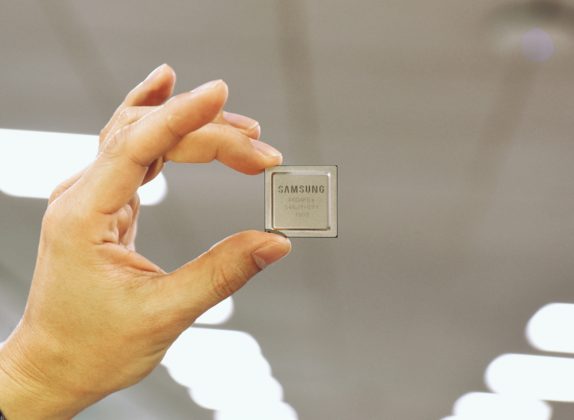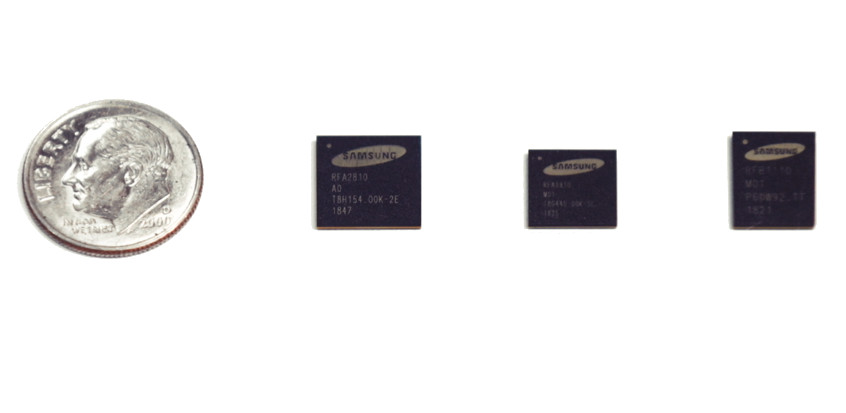
Samsung Electronics has announced that it has successfully completed the development of its mmWave Radio Frequency Integrated Circuits (RFICs) and Digital/Analog Front End (DAFE) ASICs, supporting 28GHz and 39GHz bands for 5G Base Stations ahead of MWC 2019.
Samsung’s new RFICs and DAFE ASICs enables about a 25% reduction in size, weight and power consumption for 5G base stations when compared to the previous iterations. 5G base stations using these new chipsets are more efficient in operation and roll-out.

To achieve ultra-fast data speeds, 5G base stations use almost one thousand antenna element and several RFICs to utilize the mmWave spectrum. Samsung’s new RFICs using 28nm CMOS semiconductor technology operate on bandwidths that have been expanded to a maximum 1.4GHz, compared to 800MHz for previous RFICs. The size of RFIC is reduced by 36% and the overall performance is enhanced by decreasing the noise level and improving the linearity characteristics of the RF power amplifier.
Samsung has developed RFIC solutions for 28GHz and 39GHz and plans to commercialize additional RFICs for 24GHz and 47GHz this year. The company has also developed its own DAFE as an ASIC, low in power consumption and small in size. The DAFE is essential for digital wireless telecommunications as it provides analog-to-digital conversions and vice versa.
Jaeho Jeon, Executive Vice President and Head of R&D, Networks Business at Samsung Electronics said:
Samsung is building on its 5G leadership with its innovative solutions including low-power RFICs and DAFE ASICs to pioneer a new era of digital transformation. We’re pleased to announce our completion of development on these new chipsets, which will play vital roles in pushing the advancement of technologies to the next level.
